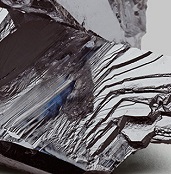The situation with cadmium pollution is a subject of major concern of various European and international organizations monitoring the turnover of chemicals. Cadmium is known to have a detrimental carcinogenic effect upon human and animal health. The production of mineral phosphate fertilizers is a major source of cadmium emissions since phosphate rock fertilizers contain cadmium in fairly sizeable amounts. These emissions penetrate into soil and surface waters both after fertilizer application and in the course of fertilizer production.
The European Union plans to reduce the content of cadmium in phosphate fertilizers, which are predominantly imported to the EU. The plan is to diminish cadmium content in fertilizers to as low as 40 mg Cd/kg and then to 20 mg Cd/kg. This plan became a matter of controversy among many European fertilizer producers, that rely on different sources of such fertilizers. Some of them import phosphates from Algeria, Morocco, Tunisia, and other African countries, whose phosphates have much bigger content of cadmium. Some collaborate in this with Russia, where phosphates feature much lower cadmium concentrations. This fact split the positions of multiple regional suppliers of phosphate fertilizers. The debate is also about which cadmium concentrations could be considered dangerous for humans, animals, and plants.
Excessive amounts of cadmium may also unintentionally occur in various commodities (e.g. brazing fillers, jewelry, etc.) in the process of industrial manufacturing, which was recently verified by some studies. This excludes various commodities where cadmium use is purposeful and indispensable.
Cadmium: structure of global consumption by end-uses

The unintentional occurrence of cadmium primarily referred to products imported from South East Asia. As a response to this issue, the European Chemicals Agency (ECHA) has been developing its legislation which may regulate the turnover of cadmium and its compounds. The idea is to apply for the EU’s Registration, Evaluation, Authorisation & Restriction of Chemicals laws, known as REACH (ECHA), under which cadmium is viewed as a hazardous commodity. REACH stipulates that suppliers of such substances should inform customers along the whole supply chain that their products contain a dangerous listed chemical. Such actions may have a prohibitive effect upon the cadmium market.
More information on the global cadmium market can be found in the in-demand research report “Cadmium: 2018 World Market Review and Forecast to 2027”.
